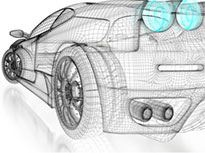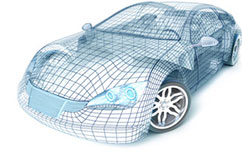- Repairing and editing dirty STL geometries.
- Refinement, coarsening, smoothing and blending.
- Hole filling.
- Smoothing (Laplacian and curvature diffussion).
Discrete Geometry Kernel (DGK) - Making Models Work
DGK takes a topology centric approach to faceted geometry modeling, explicitly representing topological features like curves and vertices internal to a surface. DGK is able to accurately reproduce any topological configuration that a geometric kernel can provide and is able to add complex topology to models that originate without any such information, for example models from point clouds or models that have lost information from being exported to a STL file. Its topology management capabilities allow enhanced control and flexibility over what is traditionally provided in faceted modeling libraries, for example, supporting defeaturing operations, defining a vertex or curve on the interior of a surface to support point or line loads for a simulation, or preserving a weak crease that could be otherwise destroyed by coarsening or smoothing operations.
Although DGK is focused on addressing simulation modeling needs it can easily be used for other applications that work well with facet models but need the ability to improve and modify the models for application specific requirements.


DGK provides an extensive set of utilities for working with facet representation of your models.
DGK also provides comprehensive modeling capabilities with the ability to work with tolerances much greater than B-Rep based solid Modeling, allowing for resolution of gaps and overlaps. One unique capability of DGK as a modeling kernel is that whenever practical the tolerances are defined as part of the operation rather than as attributes of the model or model entities.
DGK modeling capabilities include
- Importing facet data.
- Constructing solid primitives, surfaces and curves.
- Constructing higher order smoooth surfaces.
- Embedding Curves in surfaces.
- Defining edge, face and body topologies (implicit and explicit).
- Removing unwanted topology.
- Modifying existing topology (ie joining faces).
- Calculating large tolerance intersections.
- Large tolerance Stitching.
- Performing large tolerance Booleans.
- Blending to ensure C1 continuity between surfaces.
DGK provides unique capabilities necessary for efficiently transforming data from CAD or other sources into models suitable for meshing and simultaion problem definition.
t : +1 706 839 1562 e: info@intrinsim.com
